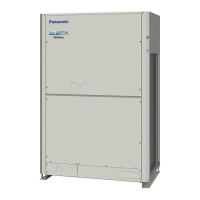Why is my Panasonic U-125PEY1E8 Air Conditioner emitting dust?
- CChristopher CrawfordSep 5, 2025
The dust is discharged from dust accumulation inside the indoor unit.

Why is my Panasonic U-125PEY1E8 Air Conditioner emitting dust?
The dust is discharged from dust accumulation inside the indoor unit.
Why does the outdoor fan keep running on my Panasonic Air Conditioner after I turn it off?
The fan of your Panasonic Air Conditioner's outdoor unit may continue to operate for a while after being stopped by remote controller, even though the outdoor compressor is stopped, to make operation smoothly.
Why does my Panasonic U-125PEY1E8 Air Conditioner smell during operation?
The discharged air might smell because indoor odor components, such as cigarette odor and cosmetic odor, have accumulated in the Panasonic Air Conditioner, and are now being discharged with the air.
Why does my Panasonic U-125PEY1E8 smell when it's running?
The discharged air might smell because indoor odor components like cigarette or cosmetic odors have accumulated inside the Panasonic Air Conditioner, and now this air is being discharged.
Why is my Panasonic Air Conditioner making noise during heating?
The noise you hear during heating operation is likely because the defrost operation is in progress.
Why is my Panasonic U-125PEY1E8 Air Conditioner discharging dust?
The Panasonic Air Conditioner is discharging dust because dust has accumulated inside the indoor unit.
| Brand | Panasonic |
|---|---|
| Model | U-125PEY1E8 |
| Category | Air Conditioner |
| Language | English |
Details specific safety warnings, cautions, and their associated symbols for user safety.
Explains symbols indicating flammable refrigerant and service manual references.
Provides essential details and notes regarding the refrigerant used in the unit.
Details on proper installation procedures and checks before installation.
Guidelines for electrical wiring, grounding, and the need for a qualified electrician.
Instructions for turning on the power mains before operation and for long-term storage.
Advice on optimizing energy consumption, including filter maintenance and room sealing.
Information on recycling and proper disposal of electrical products and batteries.
Guidance on how to operate and adjust the airflow direction, referring to remote controller instructions.
Instructions for cleaning the air filter and when to consult a dealer for replacement.
Explanation of the unit's operating mechanism, including heating, defrosting, and DRY operation modes.
Covers operational sounds like streaming water or cracking noises.
Addresses changing or un-settable airflow direction and flap movement.
Explains dust discharge and fan speed faster than setting during initial operation.
Troubleshoots scenarios where the unit does not operate or resumes immediately.
Addresses noise and steam generation during heating operation.
Checks for power failures, tripped breakers, or the unit being turned off.
Addresses performance issues due to dust, settings, sunlight, open doors, or heat sources.
Provides a multilingual mapping of technical terms used in the manual.












